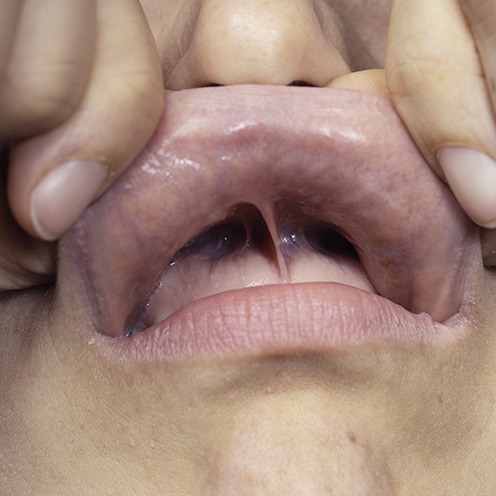Lip & Tongue-Tie Glossary – Dallas, TX
Important
Words to Know
While treating a lip and tongue-tie is actually a fairly simple process compared to other dental procedures, there tends to be a lot of terminology associated with the conditions that you might not be familiar with. It can be hard to seek treatment when you’re not sure what’s going on. Dr. Morgan and the rest of our staff at the Dallas Tongue Tie Center want you to feel like you’re in control during your treatment. To that end, we’ve listed the definitions for some of the most common terms that are likely to come up when looking for a solution to lip and tongue-tie. Don’t be afraid to call us if you have any questions that aren’t answered here!
Why Choose The Dallas Tongue Tie Center for Lip & Tongue-Tie?
-
Laser Frenectomies
Available -
Zaghi Technique
Offered -
Friendly, Experienced
Dentist
Frenum/ Frenulum (Frenulums/ Frenula/ Frena)

The frenulum is a small band of tissue that links your tongue to the floor of your mouth. There are also separate frenulums for the upper and lower lip connecting them to the gums. The frenulums form during apoptosis, which is a process that occurs at the fetal stage. Once the lips and tongue have been sufficiently separated from the rest of the mouth, the child will be able to move them freely. A singular frenulum is sometimes called a frenum, and multiple frenulums may be referred to as frenula or frena.
Tongue-Tie

When the frenulum connected to the tongue is too short or thick, it restricts movement. This is the condition known as tongue tie, and depending on how severe it is, it could make it very difficult to perform basic tasks like chewing and talking. It tends to be especially impactful for children who are still developing these skills.
Lip-Tie

There is a separate frenulum for both the upper and lower lip. Just like with the tongue, the frenulums attached to the lips might be too short or thick, preventing free movement. This could occur to just one lip, or it might happen to both. Lip-tie is often characterized by a sizable gap between the two front teeth, which can cause speech problems as well as aesthetic issues.
Lip and Tongue-Tie

When lip-tie and tongue-tie occur at the same time, we’ll often refer to them collectively as “lip and tongue-tie” just to keep things as simple as possible.
Buccal-Tie

A buccal-tie occurs when there’s a problem with short, hard, or inflexible tissues that connect the cheeks to the jawbone and the rest of the skull. This condition isn’t as common or well-known as lip or tongue-ties, but it can still be an issue.
Ankyloglossia

“Ankyloglossia” is the scientific word for a tongue-tie. You might also hear lip-tie referred to as “lip adhesion.”
Tethered Oral Tissues (TOTS)

Lip-tie, tongue-tie, and buccal-tie are all referred to as examples of tethered oral tissues. The name is often shortened to TOTS because the conditions are normally most well-known for affecting the development of young children.
Frenectomy/ Frenotomy/ Frenulectomy

Frenectomy, frenotomy, and frenulectomy all refer to the process of removing a select amount of connective tissue from the frenulums so that the movement of the lips and tongue becomes unrestricted. All of these terms refer to the same treatment; they will sometimes be used interchangeably, but they all mean the exact same thing. It can be done with surgical scissors, but laser frenectomies can also be performed. Dr. Morgan also practices the Zaghi technique, which combines a frenectomy with myofunctional therapy.